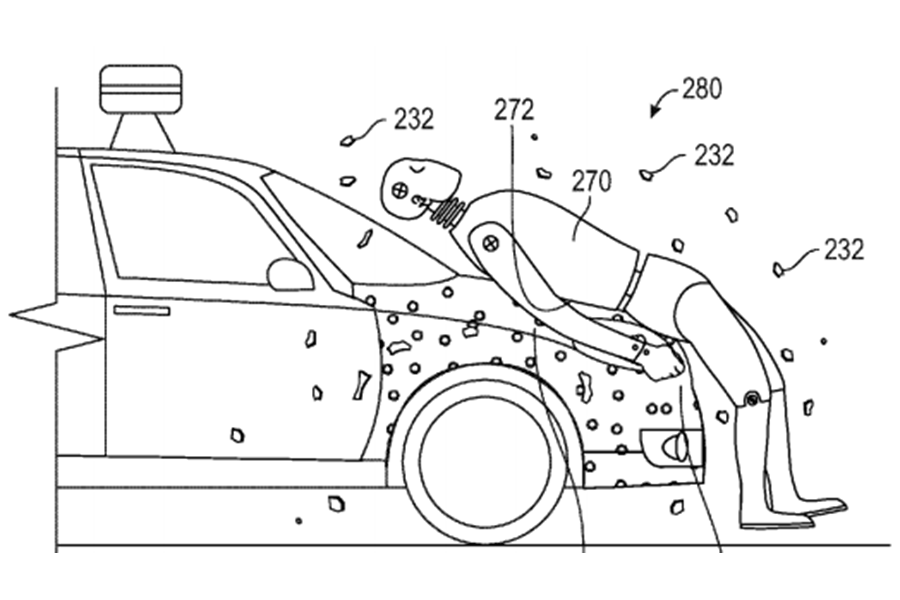Human flypaper? Google's solution to collisions between cars and pedestrians
Loading...
In a characteristically unconventional move, Google acquired a patent Tuesday safeguarding the invention of a new safety feature for driverless cars: human flypaper.
The sticky coating, hidden beneath something of an “egg-shell” layer on the hood, would adhere to any pedestrians unfortunate enough to collide with the car, thereby fixing them in place and avoiding secondary injuries that can often be sustained when people are thrown after initial impact.
While the idea has met with some levity, analysts have also admitted that it may well hold merit as an effort to reduce pedestrian injuries.
"The idea that cars should be safe for people other than the ones in them is the next generation of automotive safety," Bryant Walker Smith, Stanford School of Law professor and autonomous car expert, told the San Jose Mercury News.
"Manufacturers have gotten remarkably good at protecting the occupants of the vehicle, but there's been much less attention to protecting the people outside. I applaud anybody for thinking, as they should, about people outside of the vehicle," he added.
Google has yet to offer comment on the likelihood of real-world applications, but the patent itself does reveal some details of the thinking behind the technology.
It talks of how pedestrians, once involved in a collision with a car, are often “carried along with the vehicle for a period of time,” but once the brakes are applied, the person will be thrown from the car and experience a secondary impact, either with the road or another object.
“This secondary impact can often cause severe injuries to the pedestrian as the road surface or other object does not exhibit any sort of compliance or cushioning as the vehicle front end might.”
Thus the patented invention – an adhesive layer, protected from debris by a coating and exposed upon impact with a person, which then “bonds the pedestrian to the vehicle so that the pedestrian remains with the vehicle until it stops.”
This is by no means the first effort at ameliorating the effects of collisions between cars and people maneuvering by foot. Some cars have small explosive charges hidden beneath the hood, to boost the surface by a few inches during impact, thereby providing a crumple zone to ease the forces afflicting the pedestrian.
Others deploy external airbags.
But Google’s sticky approach certainly considers the problem from a fresh and innovative angle.
"This idea is a fascinating example of just how far vehicle technology is changing," Kevin Clinton, head of road safety at the Royal Society for the Prevention of Accidents, told the BBC. "It will obviously need to be developed and tested to ensure that it works reliably and doesn't cause any unintended consequences."








